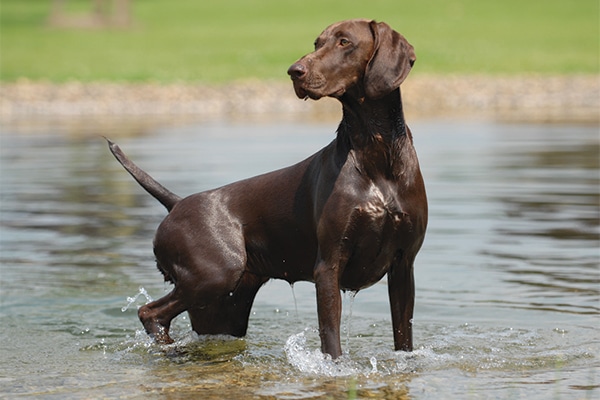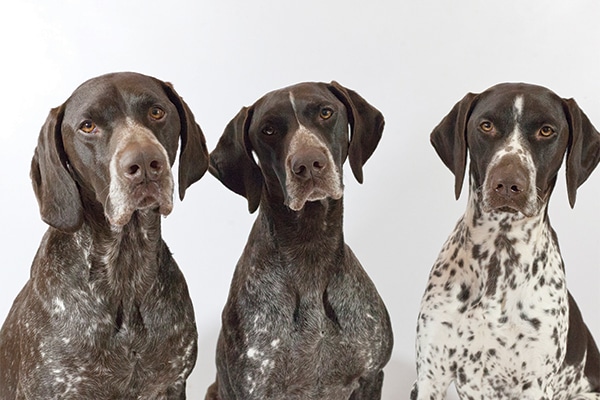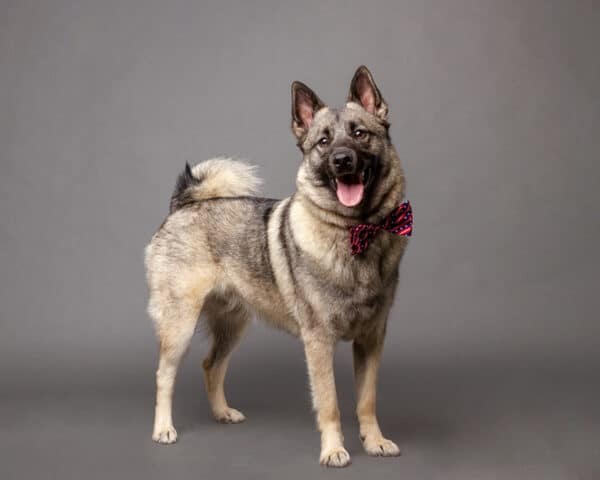Sociable, eager to please and tremendously athletic, the muscular German Shorthaired Pointer (GSP) has a heart for the hunt. He also makes a fine family friend. An all-purpose gun dog, the breed has strong scenting powers and boundless curiosity. His energy matches up nicely with active, outdoor-loving families or singles.
Hunting in his history
Throughout the late 19th century, the Germans bred the German Shorthaired Pointer as an all-purpose hunting dog. After all, why use one dog breed to hunt, another to point and yet another to retrieve, when one breed could do it all?! Developed with versatility in mind, the GSP was bred to hunt on both land and water, point, trail injured game and search out varied game. Primarily a bird dog, the GSP hunted quail, pheasant and waterfowl but also deer, opossum and raccoon. With his phenomenal endurance and strong field instincts, the GSP soon became an exceptional hunting companion. Unlike many of his hound counterparts who hunted in packs, the GSP was developed to work with man alone.
Busy. Busy. More busy.
Today, GSPs continue to excel in hunting, but they also shine in tracking, companionship and keeping their property free of vermin, too. As puppies especially, GSPs have an almost boundless energy. The pups need both structured and unstructured outlets for their playful get-up-and-go makeups. The GSP usually takes naturally to swimming, hiking, and sports like tracking or flyball.

stays in motion!” Photography by: ©Tierfotoagentur | Alamy Stock Image
A well-exercised GSP makes a lovely housedog. He can tolerate both cold and warm weather, but he isn’t meant to be left outdoors alone for long periods. If he isn’t included in family fun and sports, he’ll likely devise creative sports of his own. “What do you mean you didn’t want me to dig up all your sprinkler heads? They’d taken over the yard!”
Traditionally, GSPs may excel in sports over “academics,” but they’re still an intelligent breed. GSPs can shine in obedience, but families will need to keep lessons stimulating and non-
routine. While hunting is the crowd favorite among GSPs, other movement sports such as dock jumping, agility, disc dog and rally are likely to hold his attention.
GSPs usually get along with other dogs; many chase cats or other small animals. With children, young GSPs show (too much, at times!) exuberance, but they’re almost always well-intentioned. Some GSPs evidence a watchdog gene. Most engage agreeably with new visitors, particularly if the guests have good ball-throwing arms!
Point to the Facts
- Weight: 55 to 70 pounds (male), 45 to 60 pounds (female)
- Life span: 10 to 12 years
- Coat: The short, thick coat has a slightly rough feel.
- Color: Solid liver or a mix of liver and white
- Ears: The breed’s ears’ shape and fold may inhibit airflow, sometimes allowing for infections. Regular cleaning with mild ear solution is beneficial.
- Equipment: Plenty of tough, durable retrieving toys
- Grooming: Frequent brushing keeps the coat in good shape, but in general the breed isn’t high maintenance (for grooming, at least!).
- Shedding: The GSP sheds, and his hair’s texture means it often sticks to furniture and carpeting.
- Best for: Hunters, active singles. Busy families with a true commitment to exercising the dog daily.
- Possible health issues: Canine hip dysplasia
Find more dog breeds on dogster.com:






